One of the biggest problems from working at home can be inactivity. There’s no walking to get a cup of coffee, visiting a nearby colleague, taking the stairs to the bathroom or those incidental types of activity that come from being in a workplace with people and areas spread out. Everything is within easy reach at home. Couple that with a busy workload and this can mean sitting for as long as possible until the task is done. Suddenly hours have gone by and we’re still sitting hunched over the desk.
Remaining in one posture for hours at a time can affect the muscles in your back, neck, hip flexors, hamstrings and calves. Excessive sitting can affect your metabolism, increase blood pressure, blood sugar and cholesterol – and that’s just the tip of the iceberg!
Staying active when working from home may seem easy. Without the daily commute and perhaps having more flexibility in your working hours, surely being at home affords you more time to spend on exercise?
Whilst this may be true in theory, we may quickly fall into routines that do not prioritise healthy activity and the boundaries between work and personal life become blurred.
The best solution is to come up with active strategies that can fit into your work at home schedule. This can be beneficial even if you participate in a regular physical activity.
Let’s take a look at some of the ways that we can sit less and move more in our day.
1. SET UP YOUR ENVIRONMENT FOR SUCCESS
The first thing you should do to ensure success when working at home is to create a proper working environment. You should have a dedicated workspace with a desk and chair that support your posture and allow you to sit in an ergonomically correct position.
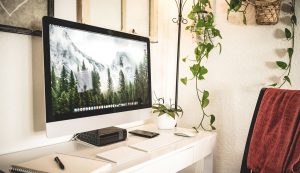 Make sure your back, knees are hips are supported by your chair by adjusting the height so that your hips and knees are at a 90 degree angle. You may need a something to place under your feet like a footstool to ensure this. If your chair has arm rests, make sure they support your elbows and forearms where they naturally fall in the seated position. Ensure the height of your computer is level with your eyes so as not to place strain on your neck and shoulders from looking down. Your desk should be well lit, too, so your eyes don’t get tired.
Make sure your back, knees are hips are supported by your chair by adjusting the height so that your hips and knees are at a 90 degree angle. You may need a something to place under your feet like a footstool to ensure this. If your chair has arm rests, make sure they support your elbows and forearms where they naturally fall in the seated position. Ensure the height of your computer is level with your eyes so as not to place strain on your neck and shoulders from looking down. Your desk should be well lit, too, so your eyes don’t get tired.
Whilst you may not have access to a standing or adjustable desk at home or other equipment you may normally have in the office, ensuring you have a workspace that is set up correctly will have huge benefits to your physical health and help you to feel more comfortable during your day. And of course, we recommend you change postures regularly throughout the day.
2. TAKE ACTIVE BREAKS
Remaining stationary is a surefire way to feel sluggish. You should take regular breaks during your day to get out of your chair and move around. Whether that’s to make a cup of tea or simply walk up and down the stairs or hallway a couple of times, leaving your desk for a minute or so will help you stretch, relax and refresh for the next batch of concentration. 
You can use a smartphone, timer, browser extension, or standalone app to remind you to take breaks at set intervals and we recommend breaking up your sitting every 30 minutes. Options for making your break an active one include stretching, walking or doing some body strength exercises.
Stretching exercises are a great way to take an active break. The hip flexors, hamstrings, and calf muscles are most affected by hours of sitting at a desk. However, the muscles in your neck and back can also suffer from soreness and tightness. When we sit for prolonged periods our muscles can get tight and affect how we are able to perform everyday functional movements (like being able to stand up straight). Taking a quick break to stretch out your neck, arms, shoulders, back and legs can help prevent this and also make you feel much better. 
If you have a bit more time and it is possible, go for a short walk around your neighbourhood. This will improve the blood flow to your muscles and reduce the postural strain on your body. After periods of prolonged sitting, the movement from walking can increase flexibility in the knees, hips and ankles. Walking also improves cardiovascular function and reduces stress and getting some fresh air will do wonders for your mental well-being too.
3. MOVE MORE AT YOUR DESK
This is an example where fidgeting in your seat can actually be a good thing. At times when you are at peak concentration, you may not realise that you are contracting your body in a rigid position for hours at a time. Moving more whilst you are at your desk can help release those tense muscles. Loosen up a little in your seat by rotating your wrists and ankles, stretching your arms above your head or turning your head from left to right, up and down.
If you are having video meetings with your colleagues, why not schedule in a standing break at the start, middle and end of your meeting so everyone breaks up their sitting time for a few seconds. Have this part of your remote etiquette that you support movement during meetings. A moment of pause, even when you are in the middle of something, will help centre yourself and stretch tight muscles.
Want more help to sit less and move more?
BeUpstanding is a FREE evidence-based health initiative to help people reduce prolonged sitting time and improve their health. BeUpstanding is flexible to support how teams are working, whether they are in at the workplace or working from home, making it an ideal solution to support the health of desk based workers in this period of increased remote working.
Delivered through an on-line toolkit which includes a program dashboard, downloadable resources and data-driven feedback and performance reports.
Try it now for free, visit beupstanding.com.au
This article was written by Lisa Ulyate. Lisa is an expert health coach, with over a decade of experience in helping people achieve their healthy lifestyle goals. She is currently a project manager and coach with The University of Queensland’s BeUpstanding team – a world-leading workplace health initiative addressing too much sitting in the workplace.

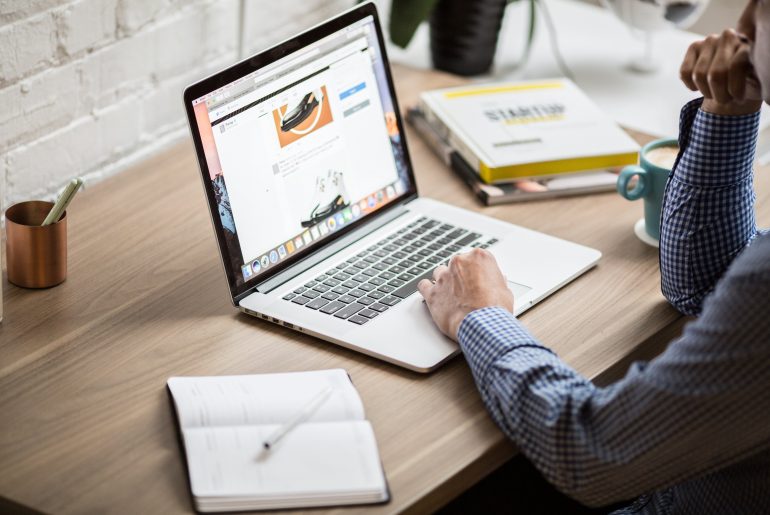

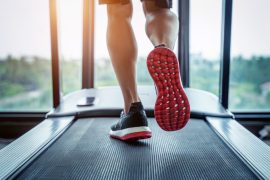

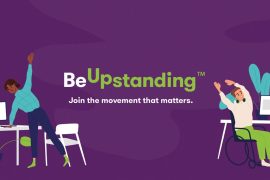
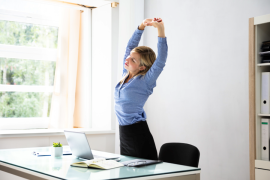
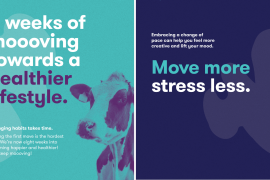
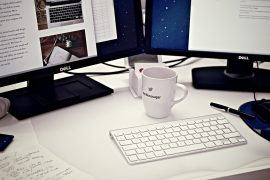

Comments are closed.